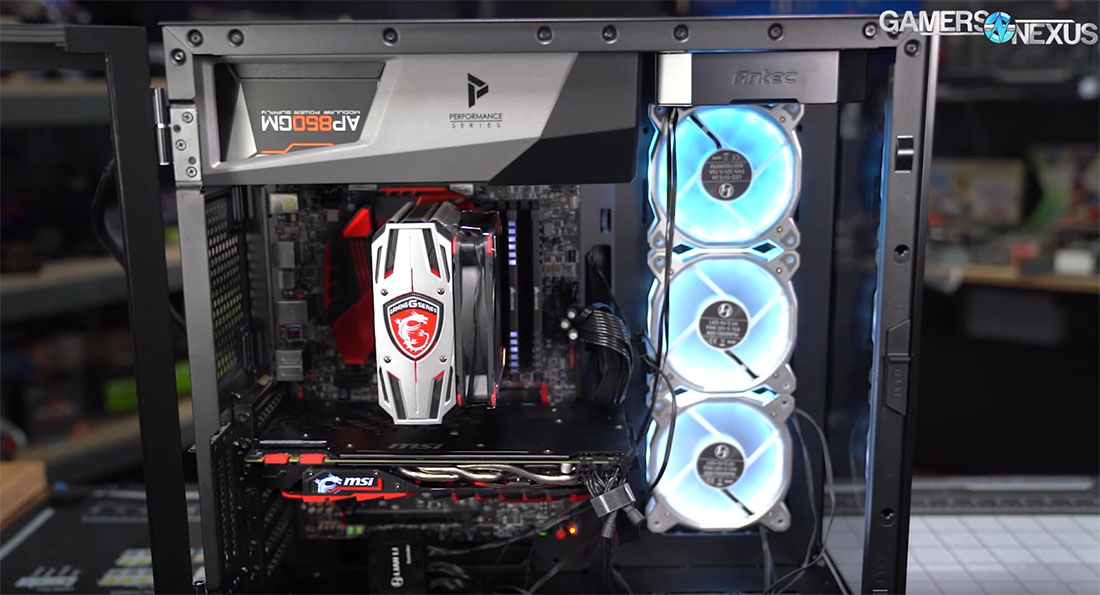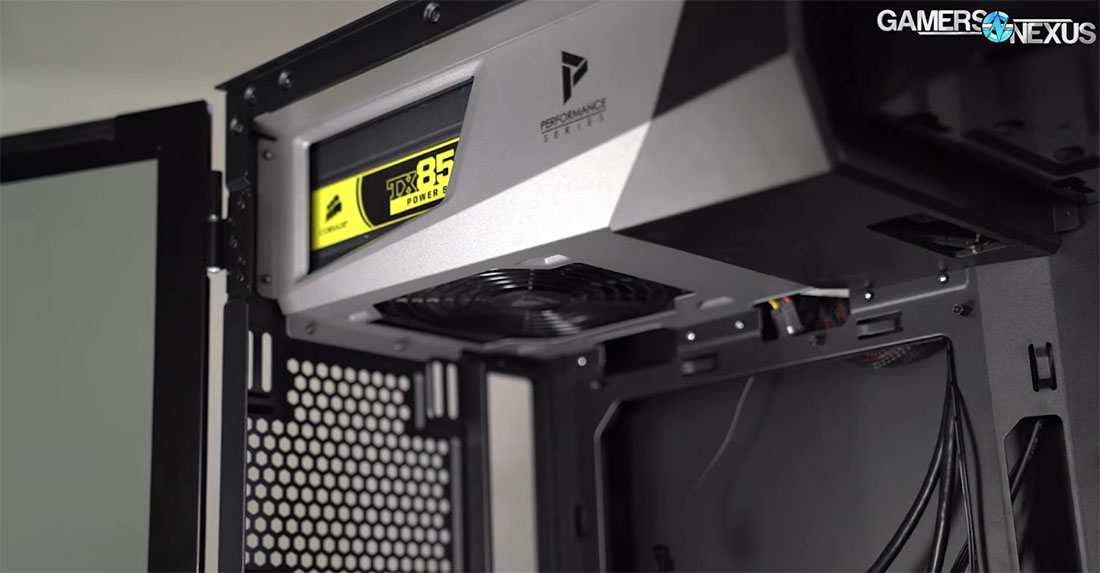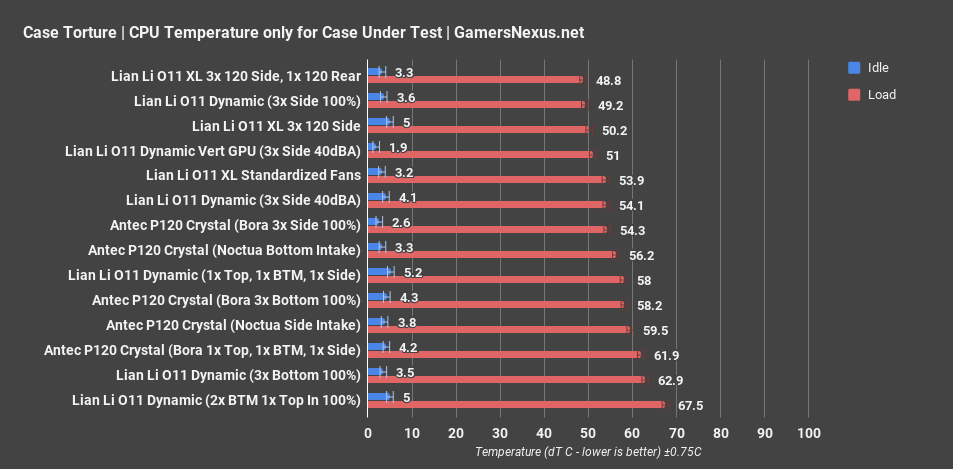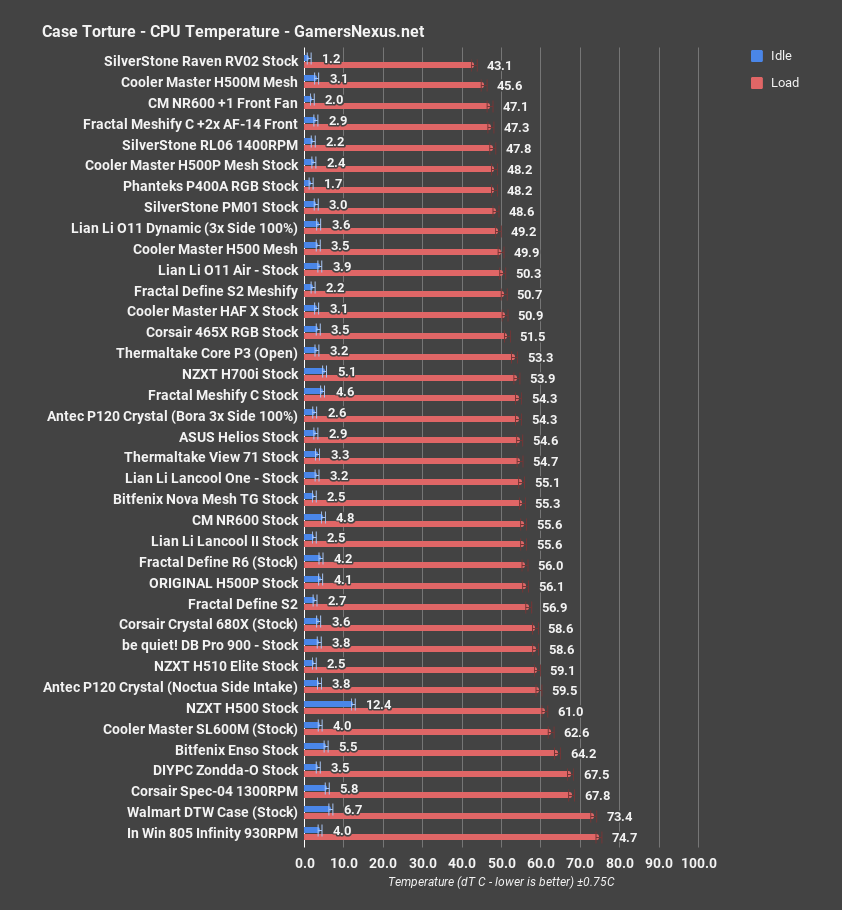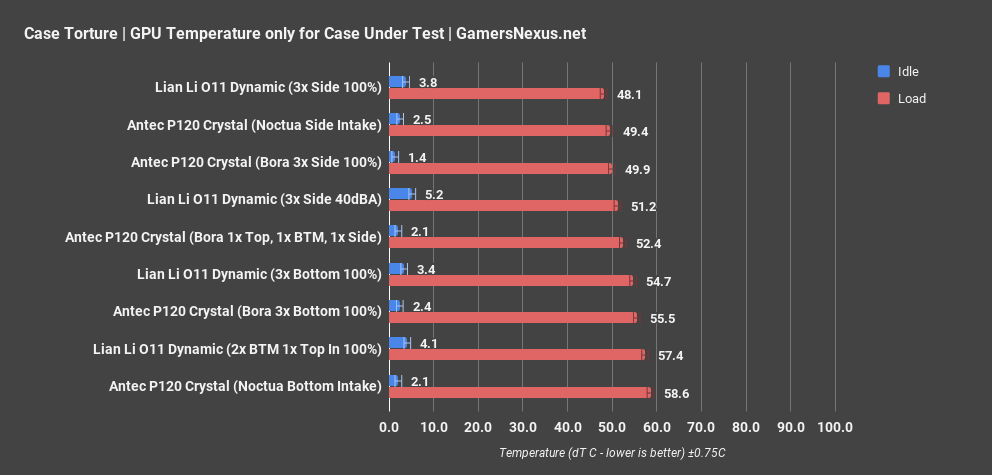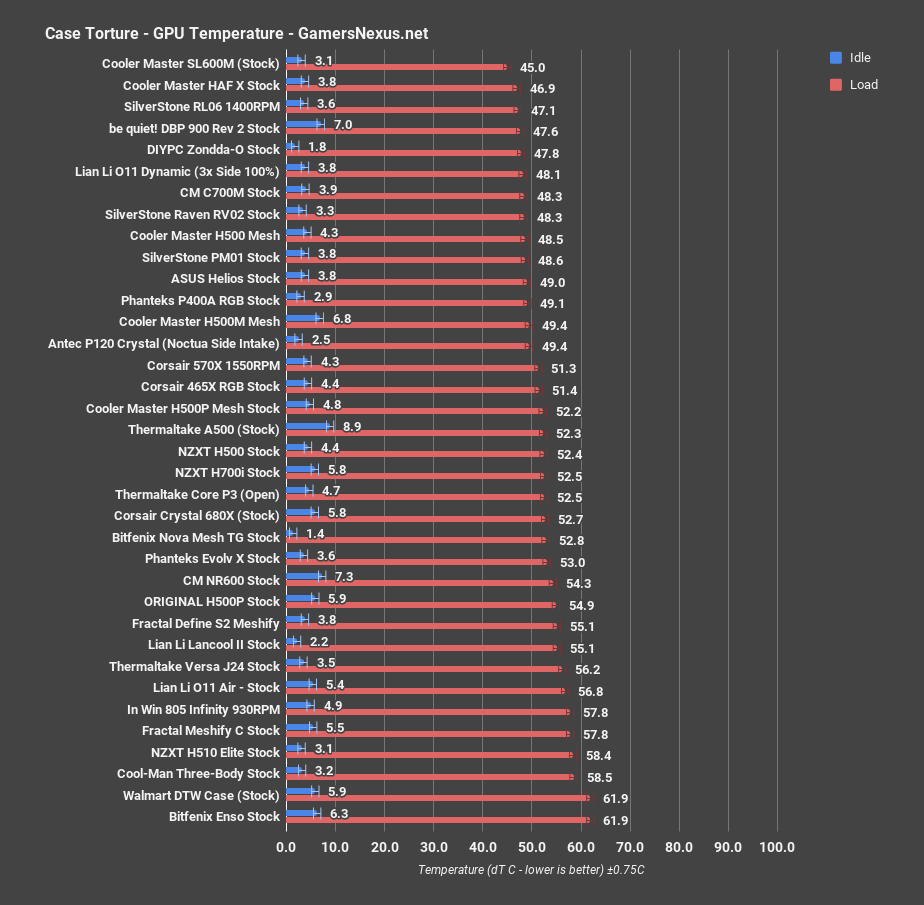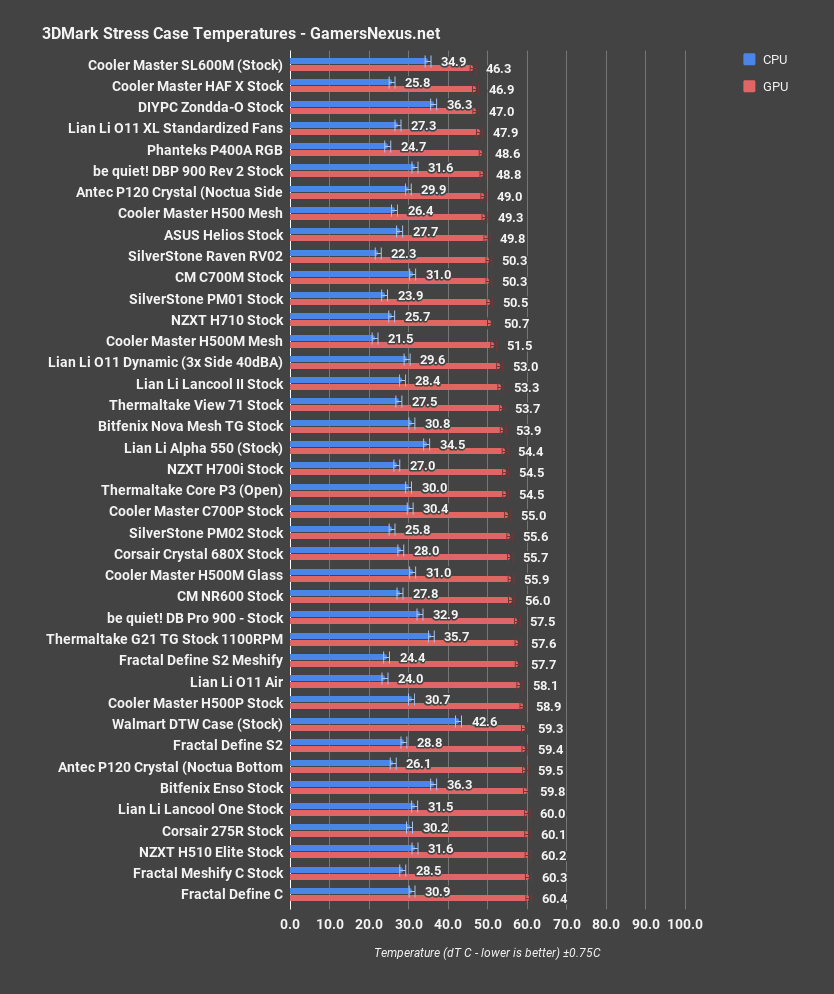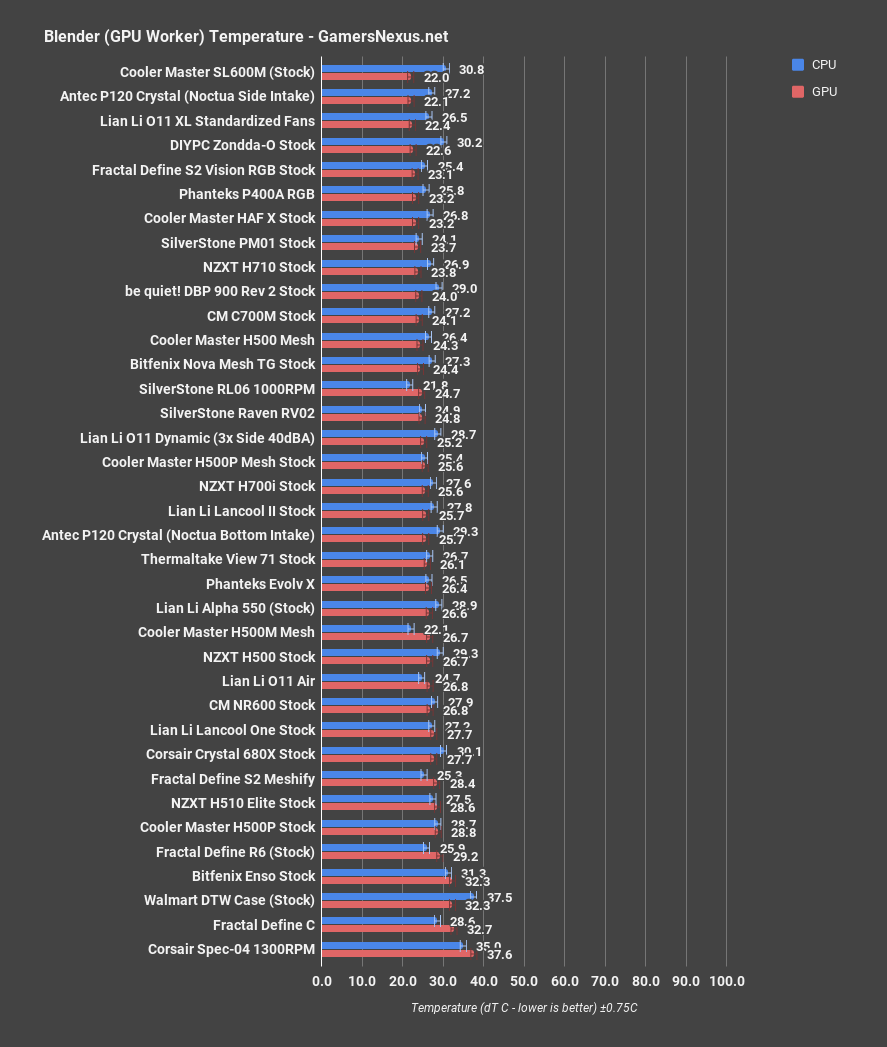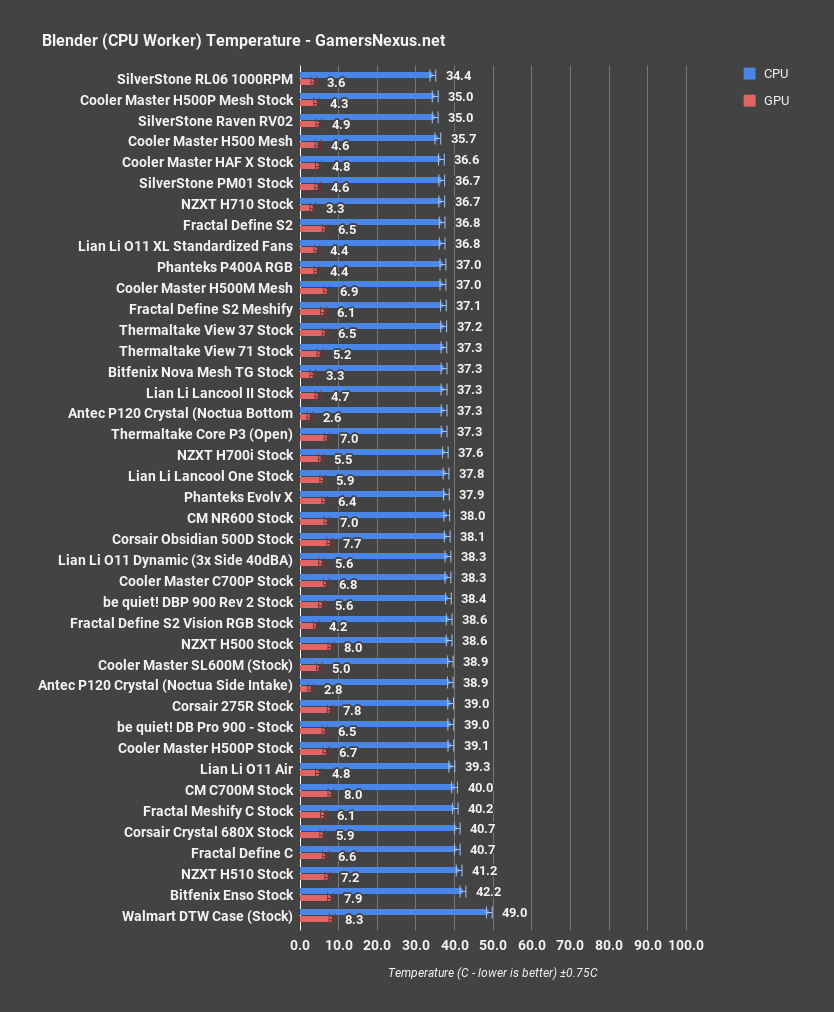The last case we reviewed from Antec was the P8, so we started out with very low expectations for the P120. The P8 performed badly, but its greatest offense was being a boring version of the same chassis everyone was selling that year. It had the feel of a cheap rebrand from an old company (by PC hardware standards) that was unwilling or unable to keep producing the weird concepts that they did in The Old Days, like the Skeleton or the Razer Cube. The P120 Crystal we’re reviewing today is a mixture of solving and doubling down on that problem, by making a relatively exotic chassis that just so happens to look the same as an existing one.
The Antec P120 Crystal takes some obvious inspiration from the Lian Li O11. That’s the first thing we noticed when we saw this case, and that’s why we bought one to review. It doesn’t use the same tooling, it doesn’t even use exactly the same layout, but one glance is all it takes to reveal the inspiration. We regard the original O11 Dynamic and the O11 Dynamic XL highly--check our reviews for more in-depth analysis--which makes it hard to accept a design that borrows so freely from them. That doesn’t make the P120 a bad case, and we’ll do our best to give it a fair shake.
Antec P120 Crystal Specs
Dimensions | 476 x 234 x 485 mm (DWH) |
Form Factor | Mid Tower |
Materials | Steel |
Mainboard Support | E-ATX, ATX, M-ATX, ITX |
Front Access & Controls | Power, Reset, White LED USB3.0 x 2, HD-AUDIO |
Side Panel | Tempered Glass |
Expansion Slots | 7 ( Horizontal ) 3 ( Vertical ) |
5.25" | - |
3.5" / 2.5" | 2 / 1 |
2.5" | 3 |
Fan Support | Front: - Bottom: 3 x 120mm / 3 x 140mm M/B Side: Up to 3 x 120mm or 2 x 140mm ( 1 x HDD bracket needs to be removed when installing 3 x 120mm ) Rear: 1 x 120mm or 1 x 140mm |
Radiator Support | Bottom: Up to 360mm ( ≤ 28mm thickness ) Rear: Up to 120mm ( Limited Radiator Length ≤ 160 mm ) M/B Side: Up to 360mm ( All HDD bracket needs to be removed when installing 360mm ) |
Max GPU Length | ≤ 450 mm |
Max CPU Cooler Height | ≤ 185 mm |
Max PSU Length | ≤ 294 mm |
Dust Filter | Bottom / Right Hand Side |
Net Weight | 10.4 Kgs |
Gross Weight | 12.4 Kgs |
THE BUILD
The features that the P120 shares with the O11 family are obvious: full-coverage glass side and front panels, side and bottom intake rails for fans or radiators, and a single exhaust fan slot like the XL’s without a single stock fan included. Like the O11 cases, the motherboard tray is further away from the side panel than the radiator mount is, the inverse of the usual arrangement with cable management space at the front of the case and limited room behind the motherboard. This makes the P120 and O11 more compatible with most E-ATX motherboards, which can simply overlap the side fan mounts. That short list covers most of the functional similarities, with the much stronger bond being that the cases just look alike.
Despite external appearances, Antec’s case interior has some major differences from the O11’s. In general, the Antec P120 is much more conventional. That applies to the case dimensions, which are more like a standard mid-tower than Lian Li’s squat, cube-like form factor, as well as the trim. For starters, the door is a hinged glass panel. This is one area where Antec may surpass Lian Li, since O11 side panels are plain squares of glass that can only be lifted off the case when the top panel is removed. Antec’s door has a spring-loaded latch at the front that makes it much more convenient to open. The downside is that the latch takes a bite out of the side panel, interrupting the clean vertical lines of the case and adding to manufacturing costs. Our other small nitpicks are that the hinge pins are about the same length, so both hinges have to be lined up at the same time when reinstalling the door, and that the door sometimes can’t be shut without pushing down the latch (at the time of this writing, it’s back to working perfectly again). Antec went to the trouble of putting springs on the chassis to keep the door from rattling and cushion it when closing, so when it does work there’s a satisfying firmness to snapping the door shut. In the end, the toolless door makes it moderately easier to maintain a system in the P120 than in the O11.
The power supply shroud is perhaps the most notable difference from the O11. One of the O11’s most unique features was placement of the PSU bay, which was stuck sideways behind the motherboard tray. Placing the PSU there made for an uncommonly large cable management chamber and an HDD cage that could also be used as an alternate/secondary PSU bay. The P120 lacks all of that, with a simple PSU enclosure stuck to the roof of the case almost as an afterthought. It doesn’t extend the full length of the case as a traditional PSU shroud might, which leaves space in front for either fans or hard drives. The only reason a shroud needs to be there at all is to provide a place to stick loose cables (which is lacking elsewhere), so it would have been an interesting value-add if Antec had made the shroud removable rather than riveting it in. The cable management channel along the leading edge of the motherboard is good, but wires can’t be hidden in the bottom of the case or along the side intake vents. The shroud remains the main container for cable clutter.
Intake for the PSU shroud pulls from the interior of the case, with no option to flip the PSU over and pull external air. That’s because the P120 is completely unventilated on top, unlike the O11 Dynamic. It’s an interesting divergence, since the O11 was specifically designed for liquid cooling and maximizes its opportunities for radiator mounting (or at least 120mm-wide radiator mounting) by ventilating the bottom, top, and side. We’re not sure why Antec would choose to skip a top radiator mount, but it’s probably for aesthetic or cost reasons. Fan mounts elsewhere in the P120 are less restrictive than the 120mm-only ones in the original O11, with a 120/140mm rear exhaust slot and 120/140mm support for both the side and bottom slots as well.
One habit Antec has apparently kept from the P8 days is dedicating a whole power connector to one or two superfluous white LEDs. In the P8, there was a tiny light-up Antec logo, and in the P120 there are two illuminated rings around the front USB 3.0 ports. Silly as it is, it’s at least potentially useful, and they used SATA rather than Molex this time.
Other case features include a vertical GPU mount, modular HDD bays, and a GPU support. We didn’t test the GPU support because who cares, and we didn’t test the vertical GPU mount because we’ve proven multiple times that air-cooled GPUs should never be mounted vertically against a glass panel (and for liquid-cooled GPUs it’s irrelevant). As for the HDD bays, they’re actually kind of neat for what they are: two metal containers that fit in front of the PSU shroud, one or both of which can be removed to make more room for fans or radiators. That’s nothing new, but it’s more meaningful in a case without a full-length PSU shroud that could potentially make full use of a 360mm radiator. An SSD can also be installed on the underside of the bottom-most HDD bay, even with an HDD on the inside. While on the subject of small quality-of-life features, we should praise the full-length front-ejecting filter on the bottom of the case. It’s better than the O11 Dynamic’s bottom filter, although the O11 Dynamic XL’s side-ejecting filter may be even nicer.
We found the case to be solidly constructed and easy to build in. There are plenty of cable cutouts, none of which have rubber grommets, but maybe that’s a positive--I’ve personally hated dealing with rubber grommets since day one, although Patrick is less strict about them. Antec adheres to the NZXT school of screw tightening, so every thumbscrew on the case was torqued to hell and back and required a screwdriver to loosen, eliminating the toolless nature of a thumbscrew. Nothing was permanently damaged, at least. Our final complaint is one that may be specific to us, which is that installing a fan on the bottom of the case in the rearmost slot requires removing the case legs, since they cover about half of the rearmost and frontmost fan placements (check the thermal section for more detail on that). Doing that once is fine, doing it five or more times to test and retest different fan configurations became extremely annoying.
GN Case Testing Bench
| Component | Courtesy Of | |
| Video Card | MSI GTX 1080 Gaming X (OC Mode) | MSI |
| CPU | Intel i7-6700K @ 4.4GHz | GamersNexus |
| CPU Cooler | MSI Core Frozr L | MSI |
| Motherboard | MSI Z170A Gaming M7 | MSI |
| Memory | Corsair Vengeance LED 32GB 3200MHz | Corsair |
| SSD | Samsung 850 EVO 120GB | Samsung |
| PSU | Corsair RM650x | Corsair |
| Cables | CableMod Pro Mesh Cables | CableMod |
| Case | This is what we're testing! | - |
The video card is configured to run at 55% fan speed at all times.
Prior to load testing, we collect idle temperature results for ten minutes to determine the unloaded cooling performance of a case's fans and air channels. Thermal benchmarking is conducted for 1400 seconds (23 minutes), a period we've determined sufficient for achieving equilibrium. The over-time data is aggregated and will occasionally be compiled into charts, if interesting or relevant. The equilibrium performance is averaged to create the below charts.
Load testing is conducted using Prime95 LFFTs and Kombustor “FurMark” stress testing simultaneously. Testing is completely automated using in-house scripting, and executes with perfect accuracy on every run.
Thermals
We tested the P120 much differently than we usually do for a couple different reasons. First, like the O11 Dynamic and the O11 XL, the P120 Crystal doesn’t come with stock fans and therefore can’t be tested truly stock. Second, we bought this case specifically to see how it compares to the O11 Dynamic, so we wanted to mirror the tests we did on that case almost two years ago.
For the first reason, lack of stock fans, we tested the P120 the same way we did with the O11 XL, taking the three Noctua fans that we use for standardized fan testing (2x 140mm and 1x 120mm) and placing the 120mm in the exhaust slot and the two 140mm fans as side intake for one set of tests and bottom intake for another. In a traditional case, the 140mm fans would be placed as front intake for the standardized test, but there is no front intake in the P120.
For the second reason, to compare specifically to our old O11 Dynamic results, we took the three Lian Li Bora fans we used in the original O11 review and tested them once as 3x side intake, once as 3x bottom intake, and once spread evenly between rear exhaust, side intake, and bottom intake. These are the three primary configurations we used in the old review. We didn’t test the negative pressure setup that Antec depicts on the P120’s product page because our test system doesn’t use liquid cooling, and because installing more than three of our own fans is an especially unfair advantage against the stock-configured cases on our charts. For the same reason, we’ll be comparing the P120’s results with the Noctua fans primarily against cases on our standardized fan chart that use the same three fans.
Finally, we’re skipping noise testing this time since the noise levels are determined by what fans we install. The case has few concessions to noise dampening, but the glass side panel is sealed along the edges with soft rubber strips and there is no top or front ventilation, so fan noise is at least directed away from the user.
Antec P120 Crystal CPU Torture
We’ll start with the CPU torture test for just the Antec P120 Crystal versus the relevant O11 configurations, then we’ll look at the rest of the comparative data.
In the torture test, the P120 Crystal CPU temperature averaged 59.5 degrees Celsius over ambient with the Noctua side intake configuration and 56 degrees dT with Noctua bottom intake. That runs counter to what we’d expect in isolation, but looking at the the GPU thermal results in a moment will make it clearer what happened. Compared to the O11 with the three 120mm Lian Li Bora fans installed, the best-to-worst order for CPU temperature with these configurations in the P120 was side intake at 54 degrees over ambient, bottom intake at 58 degrees dT, and the “mixed” arrangement at 62 degrees Celsius. The mixed arrangement isn’t exactly the same as it was in the O11, since the O11 has top fan slots but no rear slots and the P120 has a rear fan slot but no top slots. The fan we used as rear exhaust in the P120 was in the rearmost top fan slot in the O11 (still as exhaust). Side intake was also the best in the O11, but with a significantly cooler 49-degree average temperature that allowed it to outperform the P120 Crystal by a wide margin. Bottom intake was actually worse for CPU temperature in the O11 Dynamic, with an average of 63 degrees over ambient, but the P120 has a slight advantage in that the PSU will always pull some exhaust from the CPU even if cool air isn’t being pushed directly into the CPU cooler. The O11 bottom configuration also favors the GPU a bit more, something we’ll talk about in a moment. The mixed configuration isn’t as directly comparable, but the 58-degree Celsius average for the O11 is cooler than the P120’s average. That makes the O11 the winner in two out of three configurations as well as the case with the best overall CPU temperature in any of the three configurations, but also more unique features with its compartmentalization.
This next chart shows the comparative data, but is presented with fans that are technically not “stock” since the P120 doesn’t have a stock set of fans. The testing here shows the P120 with its Noctua and 3x Bora configurations, making it not directly comparable to stock fan case tests, but we still wanted to illustrate where it lands as that’s what we did for the O11 Dynamic originally. The best average CPU temperature out of the torture tests we ran was 54 degrees Celsius over ambient for the P120. That’s not terrible, but given that it’s got higher-end fans in it, it’s not impressive versus the other cases. The P120 is equal to the stock Meshify C, but it’s disappointing given the knowledge that the Meshify C ships with only two 120mm fans and vastly improved its temperatures when more fans were added, which you can see at the 47-degree mark higher up the chart. The P120 with three relatively good aftermarket fans didn’t push past our database of stock-configured cases.
Antec P120 Crystal GPU Torture
The next data shows only the P120 and O11 for GPU thermals. The GPU in the torture tests did better with a side intake configuration over bottom intake, the inverse of the CPU results. The side intake average was a very cool 49 degrees Celsius dT, while the bottom intake average held 59 degrees dT. This is what we were referencing earlier in the CPU torture section: the CPU performed worse with side intake than bottom because in the side intake configuration airflow was moving in the intended direction, from the front of the case through the GPU/CPU coolers and out through the top exhaust fan and PSU. Exhausting heat from the GPU through this route as well as allowing it to boost higher means more heat passing through the CPU cooler, especially radiative heat off the backside. The other equally important part of this equation is that the bottom intake configuration sucks. We pushed the intake fans as far to the back as possible to line up with the GPU die, but the case legs half block the rearmost slot and aren’t very high off the table surface to begin with. The bottom intake is restricted enough that even though it blasts the GPU die directly with cool air, other fan configurations are better. The O11 Dynamic held the best result at 48 degrees, better than the comparable 50-degree Bora result of the P120, but the P120 is overall acceptable in this testing if configured in any way other than bottom intake only. Putting the three 120mm fans in a side intake configuration was the best for CPU and GPU temperatures in both cases, and the O11 had better temperatures in both categories, despite the P120 being overall OK.
The comparative chart is next, although again is less of a focus point. 49 degrees Celsius GPU dT with the Noctua side intake fans was the best-case scenario for GPU torture temps, which is decent compared to the full range of results we’ve gathered for case testing. It’s tied with the H500M Mesh, a.k.a. “one of the good H500s.” The editors can have fun trying to figure out which one that is. We must continue to point out that this is the best temperature we achieved using three fans that are a step above what usually ships with cases, but it’s still good news for the P120 that it can keep pace in GPU cooling with cases we’ve reviewed positively in the past, like the Corsair 570X.
Firestrike
We have two results each for the Firestrike and Blender tests, since we decided to run these tests with both the Noctua side and bottom configurations. Both Firestrike benches scored almost exactly the same average GPU dT as the torture tests in the same configurations, backing-up the results we measured there. The side intake was again much more favorable for GPU temperatures, at 49C dT versus 60C dT with the bottom intake.
We avoided comparing the Noctua fan configs to stock cases for the torture test, but since we don’t have other standardized fan configs to compare to here, we’ll take a look. The O11 XL is the closest point of comparison since it also doesn’t include fans and we therefore also used the standardized Noctua fans to test it, and it was only slightly better than the P120 in this test with an average GPU dT of 48C. The O11 Dynamic with three 120mm side intake fans installed and noise normalized to 40dBA was actually worse at 53C dT, but we already know that those same fans in that same position perform better in the O11 Dynamic than the P120 when set to the same speed--the noise normalization is what hurts it here. Compared to the chart as a whole, 49C dT is great, putting it on the same level as the H500 Mesh or the RV02, both of which are cases that do come with a decent complement of stock fans. Apparently putting good fans in a case makes it perform like other cases that have good fans in them. Jokes aside, this at least means that the P120 has decent cooling potential depending on the fans installed.
Blender GPU
The Blender GPU render had the GPU at an average dT of 22C dT, or 26C dT with the bottom intake rather than side intake. The bottom intake results are hardly worth discussing at this point since they’re worse in both CPU and GPU temperatures.
The side intake result is almost tied with the O11 XL’s 22C dT using the same fans, and again beats the noise-normalized O11 Dynamic’s result of 25C dT, although the O11 performs better in like-for-like testing as discussed above
Blender CPU
Rendering on the CPU bumped the average CPU dT to 37C dT with the bottom intake and 39C dT with the side intake. This is the only test where bottom intake performs better, because this is also the only test where the GPU is under no load whatsoever. It doesn’t matter if air is being pushed straight up from the GPU cooler into the CPU, because that air isn’t being heated.
The O11 XL with the same fans averaged 37C CPU dT, cooler than either result in the P120. The Dynamic fell in between the P120’s two results at 38C dT, again with the fans noise-normalized to 40dBA and giving it a disadvantage. All of these are relatively good temperatures compared to the rest of the chart, but for the final time we’ll disclaim that the other cases on the chart were tested with their own stock fans, not the high-quality aftermarket ones that we used for testing the P120 and O11s.
Conclusion: Antec P120 Crystal
The O11 Dynamic isn’t prohibitively expensive. $130 for a case with no fans included is at the limit of what we’d consider mid-range, above the vast array of good-quality $90 towers that define that category, but below the $200+ high-end cases. The O11 performs better in thermal testing, it has a top radiator mount, and if we have to choose, we say it’s the better case. That said, the $100 P120 Crystal is significantly cheaper than Lian Li’s case, which makes it hard for us to unequivocally recommend the O11 Dynamic over it. The P120 Crystal isn’t bad. In a world where the O11 Dynamic didn’t exist as a direct comparison and the P120 shipped with three stock fans, the P120 would make a good first impression and place fairly well on the performance chart. We hope Antec continues making cases at this level of quality, but without modelling them after existing designs in a way that forces unfavorable comparison.
Editorial, Testing: Patrick Lathan
Host, Test Lead: Steve Burke
Video: Keegan Gallick, Josh Svoboda, Andrew Coleman
